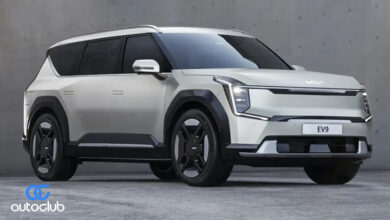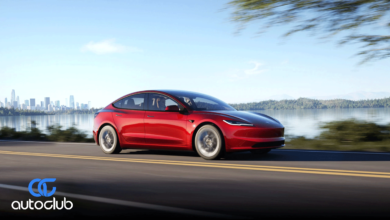Innovations in Car Technology: What’s New? – A Glimpse into the Future of Automotive Innovation

Introduction
In a rapidly evolving world, the automotive industry is no exception. Car technology is continually pushing the boundaries of what’s possible. The landscape of automobiles is changing, with innovative breakthroughs shaping the future of transportation. Join us as we delve into the exciting world of Innovations in Car Technology: What’s New?
Innovations in Car Technology: What’s New?
The Rise of Electric Vehicles
Electric vehicles (EVs) have taken the automotive industry by storm. With growing concerns about environmental sustainability, car manufacturers are investing heavily in EV technology. These vehicles offer zero emissions, lower operating costs, and a quieter, smoother ride. Innovations such as longer battery life and faster charging are making electric cars more accessible than ever.
Self-Driving Cars: A Reality on the Horizon
Self-driving cars are no longer confined to science fiction. Companies like Tesla and Waymo are making autonomous driving a reality. These vehicles use advanced sensors, cameras, and artificial intelligence to navigate roads safely. While fully autonomous cars may still be a few years away, features like adaptive cruise control and lane-keeping assist are already enhancing the driving experience.

Connected Cars: Staying Online on the Go
Imagine a car that’s always connected to the internet, providing real-time information and entertainment. Connected cars are equipped with in-car Wi-Fi, navigation apps, and voice-activated controls. This innovation is transforming the driving experience, offering convenience, safety, and entertainment, all at your fingertips.
Advanced Safety Features
Innovations in car technology extend to safety. Features like adaptive cruise control, blind-spot monitoring, and automatic emergency braking are becoming standard in modern vehicles. These technologies are designed to reduce accidents, save lives, and make the road a safer place for all.
Sustainable Materials and Eco-Friendly Designs
As the world becomes more environmentally conscious, car manufacturers are embracing sustainable materials and eco-friendly designs. Many companies are using recycled or renewable materials in their vehicles, reducing the carbon footprint of the manufacturing process. This innovation is a crucial step toward a greener future.
Enhanced User Interfaces
The driving experience has been revolutionized by user-friendly interfaces. Modern cars come equipped with touchscreen displays, intuitive controls, and voice recognition systems. These innovations make it easier for drivers to access information, control their vehicles, and stay focused on the road.

The Future of Mobility: Flying Cars and Hyperloops
Innovations in car technology are not limited to the road. The future promises exciting developments like flying cars and hyperloop systems. These innovations aim to redefine urban transportation, reducing congestion and travel times. While they may still be in the experimental phase, the potential is truly groundbreaking.
Frequently Asked Questions (FAQs)
How do electric vehicles (EVs) benefit the environment?
EVs produce zero tailpipe emissions, reducing air pollution and greenhouse gas emissions, making them more eco-friendly than traditional gas-powered cars.
Are self-driving cars safe?
Self-driving cars are equipped with advanced safety features and undergo rigorous testing. While safety concerns exist, they have the potential to reduce accidents in the long run.
What are the advantages of connected cars?
Connected cars offer real-time navigation, in-car Wi-Fi, and entertainment options. They enhance convenience and provide access to information while on the go.
How do advanced safety features make driving safer?
Features like adaptive cruise control and automatic emergency braking help prevent accidents by providing additional assistance to drivers and improving their reaction time.
What are some sustainable materials used in car manufacturing?
Car manufacturers are using materials like recycled plastics, sustainable woods, and eco-friendly fabrics in their vehicle interiors to reduce their environmental impact.
When can we expect to see flying cars and hyperloops in action?
While still in development, companies are actively working on prototypes and feasibility studies. The widespread adoption of these technologies may take several years.
Conclusion
Innovations in Car Technology: What’s New? are driving the automotive industry forward at an unprecedented pace. Electric vehicles, self-driving cars, connected technology, and advanced safety features are transforming the way we drive. Sustainable materials and eco-friendly designs contribute to a greener planet, while user-friendly interfaces enhance the driving experience. The future holds even more exciting possibilities, with flying cars and hyperloops on the horizon. Stay tuned for a thrilling journey into the world of automotive innovation.




